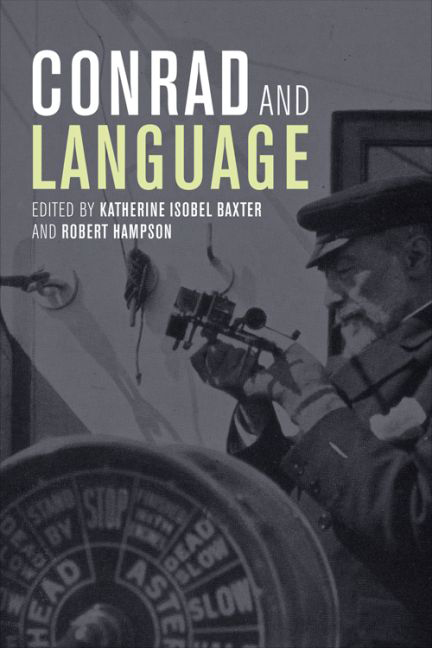Book contents
- Frontmatter
- Contents
- A Note on Texts
- Introduction
- 1 Conrad and Nautical Language: Flying Moors and Crimson Barometers
- 2 Navigating the ‘Terroristic Wilderness’: Conrad's Language of Terror
- 3 Conrad, G. E. Moore and Idealism
- 4 Conrad's Language of Passivity: Unmoving towards Late Modernism
- 5 The Powers of Speech in Conrad's Fiction
- 6 ‘Soundless as Shadows’: Language and Disability in the Political Novels
- 7 Conrad and Romanised Print Form: From Tuan Almayer to ‘Prince Roman’
- 8 Languages in Conrad's Malay Fiction
- 9 Gallicisms: The Secret Agent in Conrad's Prose
- 10 ‘The speech of my secret choice’: Language and Authorial Identity in A Personal Record
- 11 The Russian Redemption of The Secret Agent and Under Western Eyes
- Afterword
- Contributors
- Index
8 - Languages in Conrad's Malay Fiction
Published online by Cambridge University Press: 12 September 2017
- Frontmatter
- Contents
- A Note on Texts
- Introduction
- 1 Conrad and Nautical Language: Flying Moors and Crimson Barometers
- 2 Navigating the ‘Terroristic Wilderness’: Conrad's Language of Terror
- 3 Conrad, G. E. Moore and Idealism
- 4 Conrad's Language of Passivity: Unmoving towards Late Modernism
- 5 The Powers of Speech in Conrad's Fiction
- 6 ‘Soundless as Shadows’: Language and Disability in the Political Novels
- 7 Conrad and Romanised Print Form: From Tuan Almayer to ‘Prince Roman’
- 8 Languages in Conrad's Malay Fiction
- 9 Gallicisms: The Secret Agent in Conrad's Prose
- 10 ‘The speech of my secret choice’: Language and Authorial Identity in A Personal Record
- 11 The Russian Redemption of The Secret Agent and Under Western Eyes
- Afterword
- Contributors
- Index
Summary
In Najeeb M. Saleeby's The History of Sulu there is a map of the Sulu Sultanate that included the Sulu Archipelago and north-east Borneo, a small part of the region in which Conrad's Malay fiction is set. The map contains no names in English – albeit the Sulu Sultanate was by then a possession of the USA – apart from one example off the remote (to Europeans) north-east coast of Borneo, between Borneo and the Sulu Archipelago. Here, the words ‘Alice Channel’ cut visually and linguistically across this part of the map, the two foreign, colonial words intruding upon the area and the Sultanate, the long independent history of which prior to Spanish colonisation it was part of Saleeby's purpose to record.
This linguistic intrusion can serve as an exemplar of the complexities of language that characterised the linguistic environment in the Malay Archipelago in the latter half of the nineteenth and early part of the twentieth centuries, when Conrad's Malay fiction is set. This chapter will explore these complexities, assisted by some recovery of the historical context of the Malay fiction's setting in a turmoil of languages. Of the languages mentioned in the Malay fiction, the main focus, for reasons of space, will be on English as a foreign language, Malay and Sulu, although no words in Sulu appear in this fiction. This focus will largely exclude Arabic, Chinese, Dutch, Portuguese and Spanish, not to mention the hundreds of other languages of the Archipelago that are implied linguistic presences, such as the language of the ‘Goram vagabonds’ with whom Heyst sails in Victory. The aim will be to demonstrate a number of aspects of Conrad's use of languages. First, that responses to language use form part of the way in which the colonial enterprise is represented. Secondly, that language use can be seen as not only part of the colonising process (including, with some recovery of historical context, issues of language enforcement and a certain hegemony of alphabets) but also part of the colonised impacting on the colonisers.
- Type
- Chapter
- Information
- Conrad and Language , pp. 132 - 150Publisher: Edinburgh University PressPrint publication year: 2016

